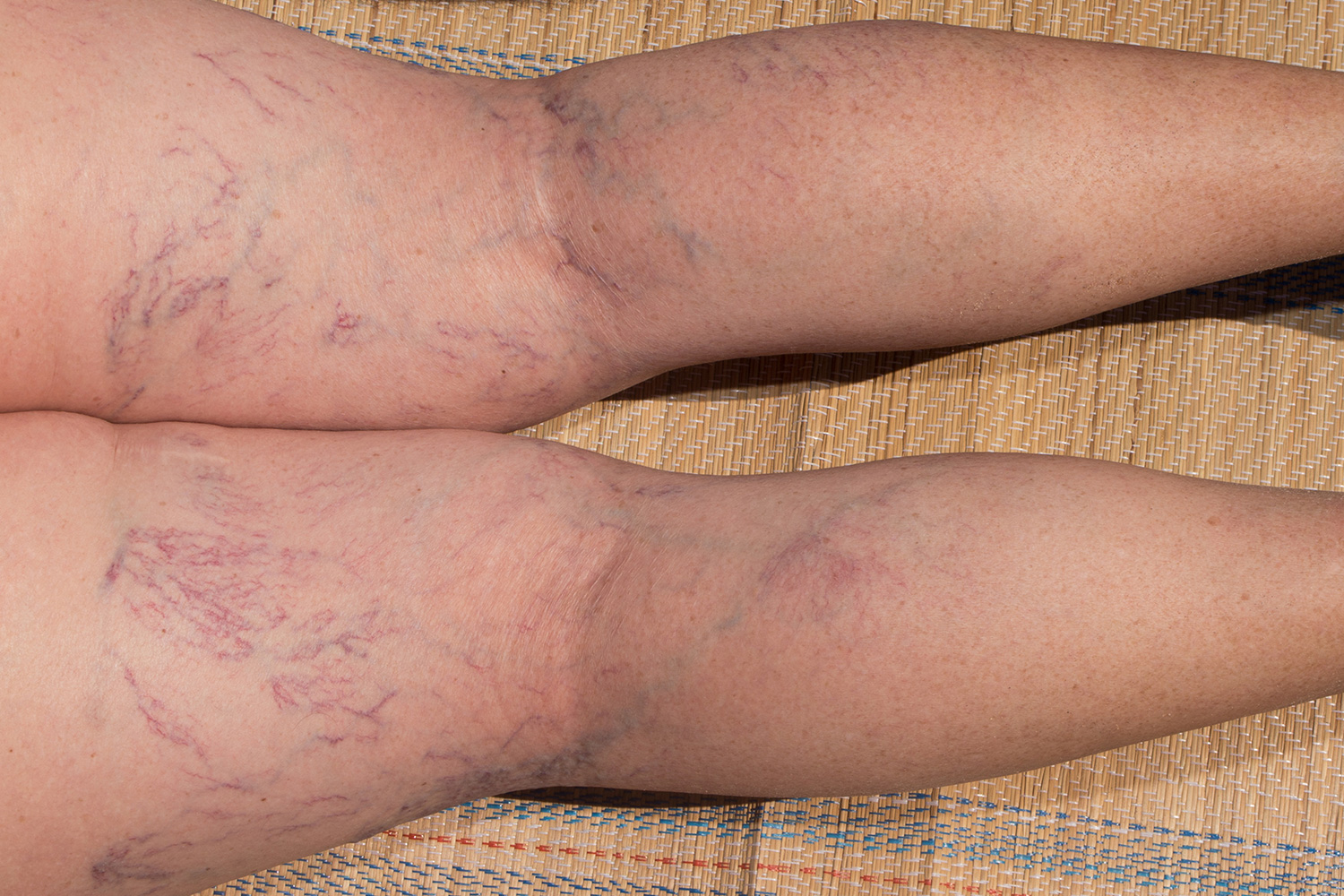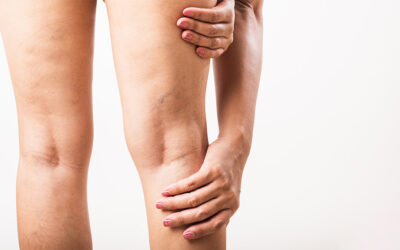When we talk about Spider veins, we’re referring to the small red or blue veins that can spread out like tiny tree branches on the feet, legs, chest and even face. They are sometimes called broken capillaries or thread veins.
Spider veins are a flow-on effect of varicose veins in nearby blood vessels. Varicose veins are the bulgy, sometimes blueish veins on the surface of the skin, but they can also be present beneath the skin’s surface.
One-way valves run all the way along the interiors of our veins all over our bodies moving deoxygenated blood back to the heart. Each heartbeat moves blood in one direction and the one-way valves prevent blood from leaking backward between beats. When some of these valves fail, blood will begin to leak backward and pool in one spot. A section of the vein will bulge out, it may take on a squiggly shape, and begin to cause other symptoms like itching, swelling and pain.
When the damaged section of vein fills with blood and swells to its capacity, the overflow of blood creates tiny spider veins close to the skin.
What causes spider veins?
A family history of varicose/spider veins is a strong indicator you will also have veins prone to this kind of deterioration. However, there are other risk factors including being on your feet a lot (standing still without moving around), carrying excess weight, pregnancy, age, lack of mobility, leg injury, etc.
Are spider veins dangerous?
Spider veins themselves are not dangerous, however the underlying cause can be dangerous. Left untreated, varicose veins can cause a range of complications, some quite serious.
MOST COMMON QUESTIONS ABOUT SPIDER VEINS
Are spider veins a sign of a blood clot?
Strictly speaking, spider veins are caused by varicose veins, and they are caused by a pooling of blood, not a clot. However, superficial and deep vein thrombosis is a complication of varicose veins. A blood clot can occur if the body mistakes a varicose vein’s damaged one-way valves, vein walls and pooling of blood as blood loss (as if it were a cut or injury), then a blood clot may form to stop the “bleeding”.
Are spider veins caused by poor circulation?
No. In fact, it would be more correct to say that spider/varicose veins cause bad circulation. When blood pools in a certain section of the vein as with varicose veins, circulation is impeded. The only way this can be rectified is to have the vein properly treated by a phlebologist. Or for relief in the short term, using compression stockings to support the vein wall can assist blood to flow more effectively.
Having said that, lack of mobility is a risk factor for spider/varicose veins, but a family history is the strongest indicator.
Are spider veins a sign of pregnancy?
It’s certainly true that varicose and spider veins are commonplace during pregnancy and may begin in the first trimester of pregnancy. With elevated hormone levels and blood volume, veins enlarge. The uterus enlarging also puts extra pressure on leg veins. However, you’re far more likely to learn you’re pregnant, long before you get any vein symptoms, from more conventional early indicators like missing your period, nausea/vomiting, etc.
How are spider veins treated?
The best way to treat spider veins is to treat the underlying cause, varicose veins. Depending on your particular needs, your phlebologist will choose the most appropriate treatment from a range of modern non-surgical procedures including ultrasound guided sclerotherapy, endovenous laser ablation, VenaSeal (glueing the problem vein closed), etc.







